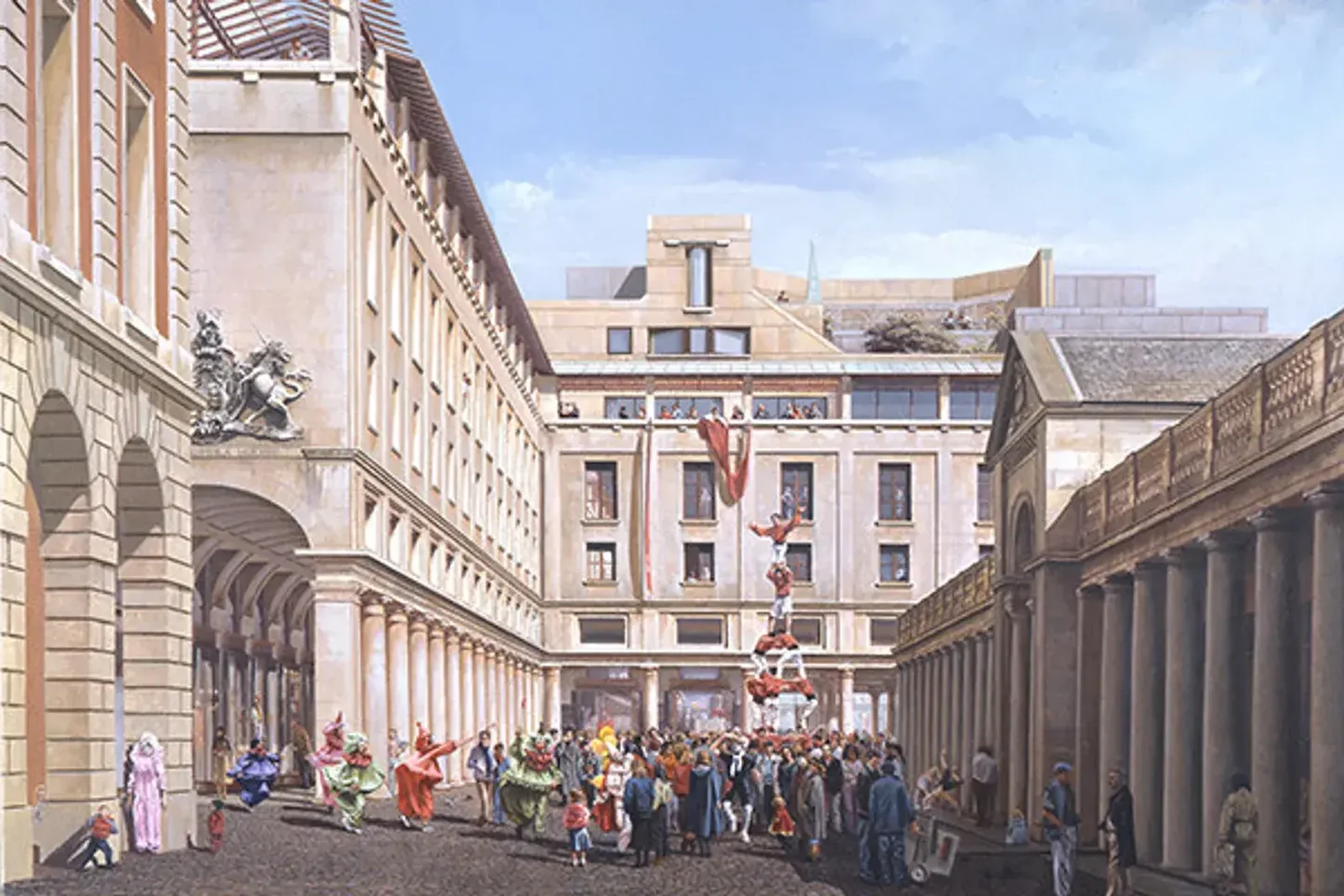blog
Reflections on PoMo
Blog — 12 Oct 2023
Charles Jencks bought a semi-detached villa in Holland Park in the 1980’s around the time he was writing about and defining post-modern (PoMo) architecture. The Cosmic House became a laboratory for his ideas. He worked mainly with Terry Farrell, a convert to his cause, who then rejected the HiTech heritage of his practice with Nick Grimshaw. Significantly this was the time when MDF (Medium-density fibreboard) appeared on the scene.
MDF is a perfectly smooth, stable sheet that could be mitred, rounded, carved, routed and finished in ways that plywood and chipboard did not allow. If Plywood was the sheet material of mid century modernism, MDF was the answer to the post-modernist architects dreams. We started our practice in the early 1980s, and also became devotees of this material for a while. It was indeed versatile and easy to use, but it was of course all about appearance, MDF could be anything from wood to stone to sheet metal. Our interests soon moved on to be concerned with using real materials appropriately.
The Cosmic House is a celebration of MDF, it enjoys the fact that when you touch what appears to be a marble fire surround it is not cold to the touch and when you tap it, it is hollow. That is part of the “wit and humour” of the whole exercise. The four bedroomed house is curiously undomestic, a cartoon interpretation of the Soane Museum, somewhere that it is difficult to imagine living in.



The roots of post-modernist architecture lie in the rejection of the international modernist creed, a recognition that the contemporary city was failing. This interest in the city and the public realm came from writings such as Colin Rowe’s Collage City and Richard Sennet’s The Fall of Public Man. The manifestation of that thinking is patchy to say the least, rather like Jencks’s MDF interior. Post-modern buildings were flimsy and cheaply made, indeed many of them have already been redeveloped. The movement was kicked off by Robert Venturi and gained traction with architects such as Michael Graves and Charles Moore in the States. It was enthusiastically embraced in Europe by for example Grassi, Rossi, Hollein, Bofill and Botta. In the UK the charge was lead by architects such as John Outram, Terry Farrell, CZWG and to some extent James Stirlings later work.

I was reminiscing about these times at a lecture that I organised for the Architecture Club by Jeremy Dixon and Edward Jones. They formed their practice after having established distinguished individual careers and produced some of the most refined work that shared the influences of the post-modernists. Their concern with place making and the historic city can be clearly seen in almost all of their projects, the Royal Opera House in Covent Garden and the Said Business school in Oxford are good examples.


I think it is fair to say that there were a great deal of inferior commercial projects that adopted the arch and broken pediment as a style, and there are few really high quality works that still stand. Outram and CZWG were perhaps the most flamboyant and most of their buildings were well built, indeed some are now listed. But the whimsical TV AM by Farrell has dated badly, and Ian Pollards Homebase and Marco Polo House have since been demolished and redeveloped.
Almost fifty years on there is a renewed interest in Postmodernism, and its influence can be seen in the work of some of the emerging practices, particularly on domestic extensions and alterations. But this is stylistic. If PoMo had a lasting influence it is on the generation of architects that were taught by the likes of Dixon Jones and their keen interest in repairing the city and respecting the public realm.